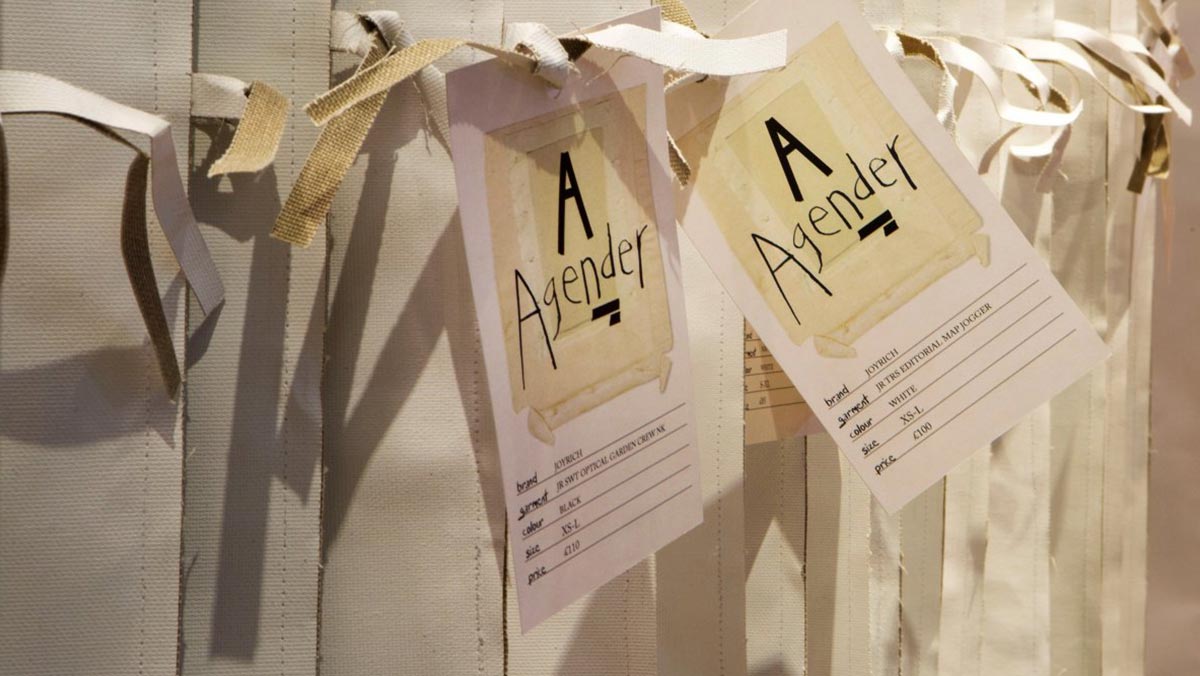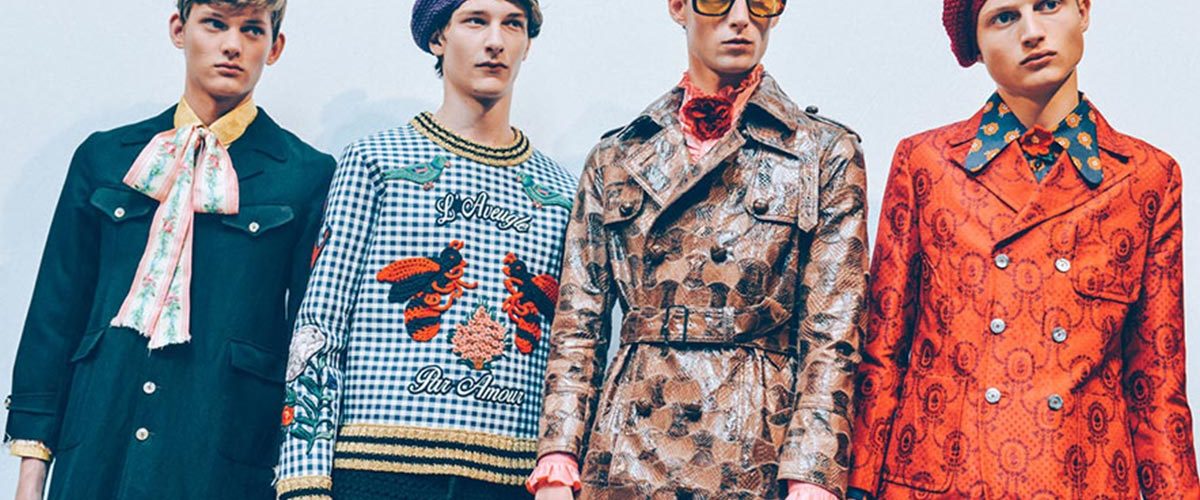Fashion houses blurring the line between menswear and womenswear is nothing new. However, society’s perception of gender, sexuality and societal norms are shifting to a place of inclusivity and open-mindedness. Gender neutral fashion has become somewhat of a normality in the industry, thanks to a rise of brand adoption and celebrity endorsement.
The Rise of Gender Neutral Fashion
For years, we have seen womenswear transition to masculine silhouettes and suiting. Now, in the age of new wave feminism, womenswear has once again become a stage for power-dressing and individualism. Menswear is also shifting to embrace typically feminine palettes and materials. Increasingly, we are seeing more androgynous clothing on the runway that embraces both traditional men and women’s pieces together on various models.
Celebrities like Jaden Smith are forefronting this movement in wearing dresses, skirts and heeled shoes at various red carpet events. Smith tweeted about these looks, to address why he wears the clothing he identifies with, “If I Wanna Wear A Dress, Then I Will, And That Will Set The New Wave…”
Gender neutral fashion is not necessarily the concept of traditional female clothing on a male and vice versa, it is creating clothing lines that relate to both genders with the freedom and openness that anyone can wear the pieces. Gender neutral clothing doesn’t force people into a box. It is a non-conforming notion that pushes gender boundaries by making them limitless; mixing traditional pieces with non-traditional models whilst giving freedom of expression.
Luxury Brands
As most motions within the fashion industry begin, they are generally under the influence of high-profile luxury brands that pave the way. The gender neutral wave has become a seasonal expectation and fashion houses such as Vivienne Westwood, Louis Vuitton and Burberry have all made conscious decisions to stretch the gendered normalities in creating lines appropriate for all.
In Burberry’s recent campaign we see a gender neutral influence in both the clothing and campaign shoot. The campaign features various people (men and woman identifying) looking away from the camera making it difficult to decipher a particular gender. Each couple is wearing the same coat which reinforces the idea that clothing is not defined by a particular sex. The campaign is a pivotal change in the traditional brand as Riccardo Tisci (formally Givenchy) releases his first collection with the British fashion house.
In January 2014, couture designer Rad Hourani designed the first unisex line to be recognised by the Chambre Syndicale de la Haute Couture. Hourani differentiates between unisex and androgyny, two terms that are often used interchangeably: “Androgyny is a style,” he said. “Unisex is erasing all limitations.”
On the Runway
Another influence on the rise of gender neutral fashion is the sudden merge of men and woman’s fashion weeks. Traditionally they have shown separately at New York, London, Milan and Paris; but due to the intertwining nature of modern fashion, this idea is no longer economical for fashion houses. Designers like Jeremy Scott at Moschino are taking the opportunity to push runway boundaries by embracing the intertwined runways as models walk down in men, woman and neutral pieces on a variety of models identifying as different genders.
“Having designers question pre-conceived notions of gender or simply recognising that menswear collections are appealing to a female consumer is a trend that continues,” says Chief Executive Officer of the British Fashion Council, Caroline Rush, on the merge of fashion weeks and the benefits it has on fashion houses. “Craig Green, for example, has started using female models to show his collections in order to appeal to his pre-existing female clients.”
High Street

Chain stores have taken a notion from their high-fashion counterparts to accommodate those not comfortable conforming to gender-stereotyped clothing. Global powerhouse H&M released a nineteen-piece collection called Denim United which features everything from long chambray shirt-dresses to Capri shorts and hoodies, all of which aren’t designed for, or marketed towards any specific gender identity.
Marybeth Schmitt, a spokesperson for H&M, explained the need for this collection, “[I]t’s very natural for us to launch a unisex collection as fashion is constantly evolving and intersecting… today we see there are no boundaries in democratic style.”
Having gender neutral fashion in chain stores like H&M allows more people to express their freedom to identify with who they choose and wear what is comfortable to them in an accessible judgement-free space.
Retailers

Retail giant, Selfridges & Co, promoted gender neutral fashion in a slow bid to close the gap between male and female departments. In 2015, Selfridges launched a campaign called Agender, which celebrates the liberating shift in gender and the effect it has had on the way we dress and buy. Agender is a space in the shop that strips back the artifice of woman and men structured clothing. All of the garments are presented in pared-down packaging to discourage preconceptions that would ordinarily persuade purchases.
“At first, we were seeing men shopping on the women’s floor and vice versa,” says womenswear buying manager Heather Gramston, “but now this has evolved, as designers are responding with a more fluid approach to gender – particularly in streetwear – and also by breaking down constructs such as separate runway shows for men and women.”
Although Selfridges has only implicated a section of the store to gender-free marketing it is still blurring the lines between having two separate departments. Earlier this year, genderneutral store Phluid opened in Manhattan in a bid to create a safe genderless space for those wanting to experiment with non-conforming silhouettes, accessories and make-up.
In the new NoHo shop, clothing is divided by aesthetic, colour and materials, not by male and female departments. Labels like Gypsy Sport, Oak, Dr Martens, and more sit next to Phluid’s in-house brand, which sells everything from skirts to denim overalls which is available and open to anyone to try on.
Owner, Rob Smith, describes the need for the shop as an open judgement-free experience for those wanting to experiment with clothing and not conform from most stores telling people what they should wear based on their gender, “[T]here’s a lot of gender-free brands in the world, most of them over at the higher price point of $500 and higher, so it was a challenge to find the product that was accessible to young people.”
The Next Generation of Gender Neutral Fashion
We are absolutely thrilled by this announcement from John Lewis!
Alongside changes coming at Clarks Shoes, THIS… https://t.co/3mDf87A4vK
— LetClothesBeClothes (@letclothesbe) September 2, 2017
The next generation is seemingly more progressive than the next. UK department store, John Lewis, has ditched the labels on ‘boys’ and ‘girls’ clothing to reduce gender stereotypes and instead will market them as “Girls & Boys” clothing on all of the tags. The signs throughout the store have also been removed so kids are free to roam without being directed to one area. A new line of gender neutral pieces have also been introduced to the store.
Caroline Bettis, head of childrenswear at John Lewis explains the decision, “We do not want to reinforce gender stereotypes within our John Lewis collections and instead want to provide greater choice and variety to our customers so that the parent or child can choose what they would like to wear.”
The decision to do so is simple, to let ‘kids be kids’ and a ‘T-shirt be a T-shirt’ with no preconceived gender connotation attached.







